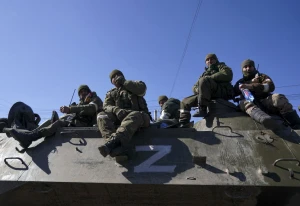
January 29–February 5 live war map: Ukrainian troops stabilize frontline, battle for every meter near Pokrovsk
For the second week straight, fighting on the front lines has slowed down, with little movement on the map—Russia's advances are losing steam. More than half of the clashes happened near Pokrovsk, where Ukrainian forces are holding the line, resisting Russian attacks, and launching counterstrikes of their own
In January, the invading Russian forces captured 326 sq. km of Ukrainian territory—the smallest figure in the last six months. Despite the slowdown in Russian troop advances, the Ukrainian Armed Forces have not eased up in their efforts to eliminate them. In January, Ukrainian forces nearly matched December's record, neutralizing over 48,000 Russian soldiers.
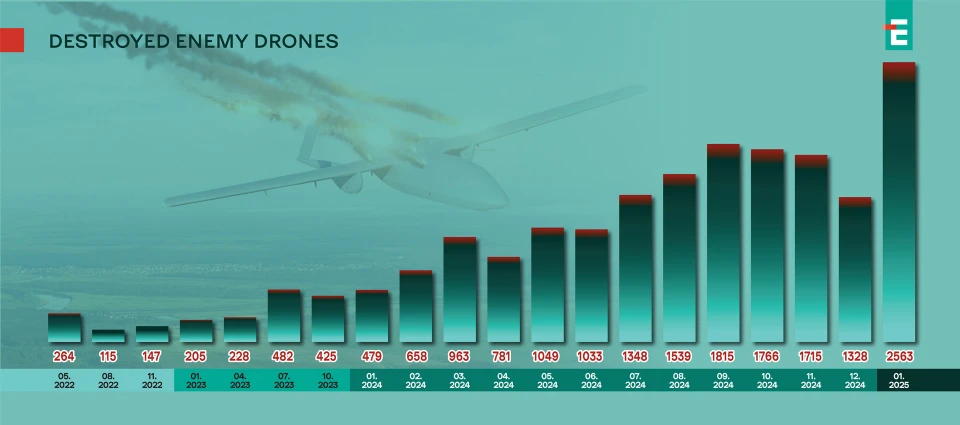
infographic of enemy losses, Photo: Espreso
Additionally, the Defense Forces set two new records—destroying almost 3,000 vehicles and shooting down over 2,500 tactical-level drones. While the increase in downed drones represents a significant breakthrough for the Armed Forces, the high number of destroyed vehicles is attributed to a decrease in armored vehicles and tanks on the front line, leading to the destruction of everything else the invaders used to reach the battlefield.
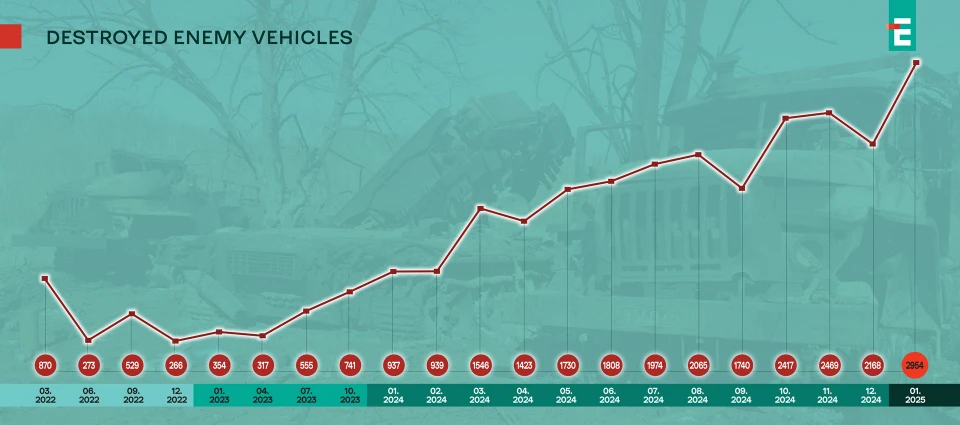
infographic of enemy losses, Photo: Espreso
Novopavlivka sector – slow stagnation
After the occupation of Velyka Novosilka, the Russians failed to capitalize on their success and became bogged down in the town, where they are being hit hard by our artillery. Notably, Ukrainian artillery has recently seen a significant replenishment of its ammunition supplies. The number of clashes in this section of the front has decreased dramatically. The Russians are regrouping—some of their forces are being redeployed to the Pokrovsk sector, while others are preparing for new offensives. It is likely they will focus on bypassing Velyka Novosilka, particularly from Rivnopil toward Novosilka on the left flank and from Rozdolne toward Bohatyr on the right. At least this week, their activity has been concentrated in these areas.
For several weeks, intense battles have raged over the village of Dachne on the eastern edge of the post-Kurakhove sector. Russian troops are gradually advancing toward the village from the east and south and have already taken control of its northern part. However, the Ukrainian Armed Forces are holding the front line along one of the tributaries of the Sukhi Yaly River, ensuring that the defenders of Dachne remain relatively secure and are not at risk of encirclement. They have a stable supply route from Ulakly and an evacuation corridor.
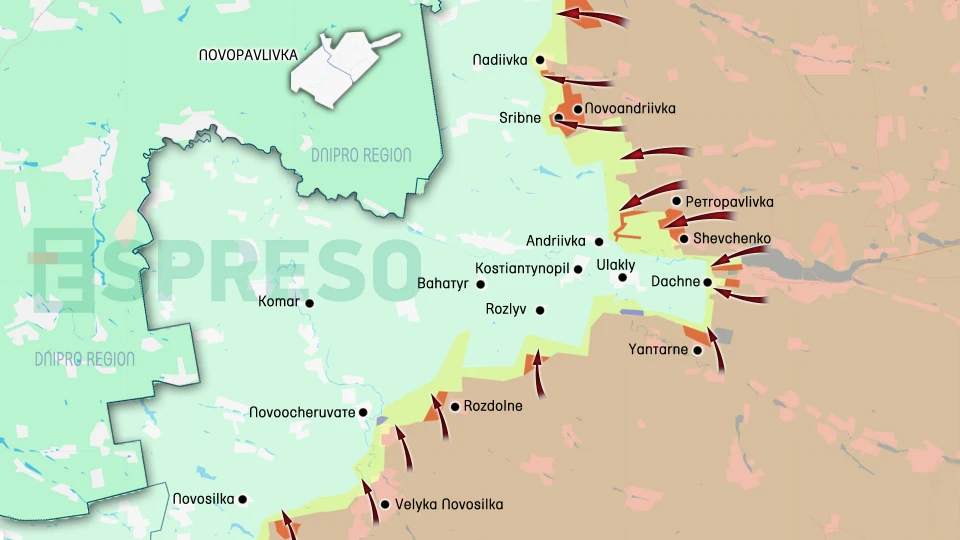
Ukraine Russia war live map, January 29 – February 5, Photo: Espreso
The durability of our position in the post-Kurakhove sector depends on how long Ukrainian forces can hold the defense in Andriivka. Fierce fighting is ongoing for control of this village. For several weeks, the Russians have been trying to establish a foothold on the eastern outskirts, building up enough forces to launch a full-scale offensive. The areas of their concentration are marked on the map. However, the Ukrainian Defense Forces still control almost the entire village and maintain fire control over a large area beyond it.
Lacking the strength for a frontal assault, Russian invaders are attempting to bypass the village from the north. Earlier, they cut off the road near Petropavlivka, and this week, they managed to advance further west to the village of Sribne after occupying Novoandriivka. On a neighboring section of the front, the Russians have been attempting for the third week to break through from Novoielyzavetivka to Nadiivka, achieving only minor progress. This sector near Sribne and Nadiivka now functions as a battering ram, which the Russians are using to push westward toward the Dnipropetrovsk region and Novopavlivka. The further they advance, the harder it will be for Ukrainian forces to maintain strongholds near Andriivka and Kostiantynopil. At the same time, Russian forces are strengthening their left flank in the push toward Pokrovsk.
Pokrovsk takes center stage in Russian offensive
Despite over 450 clashes along both flanks and a 50 km stretch of the Pokrovsk front this week, the Russian advance has been minimal. Therefore, the Defense Forces, after a change of command and some regrouping, have managed to establish an effective defense and even carry out local counterattacks. Hopefully, this has not come too late.
On the left flank, the Russians have been fighting for the village of Kotlyne for the third week. They have captured most of the settlement but still can't take it fully. Meanwhile, Ukrainian troops are making mechanized assaults toward the village. The Defense Forces launched several attacks near Udachne, where Russian troops achieved almost nothing despite the significant resources they expended in the fighting. Nevertheless, the Russians intend to advance toward cutting off the Pokrovsk–Pavlograd route via the shortest path. They are now only 4.5 km away from severing this key logistical artery and completing the encirclement of the city from the west.
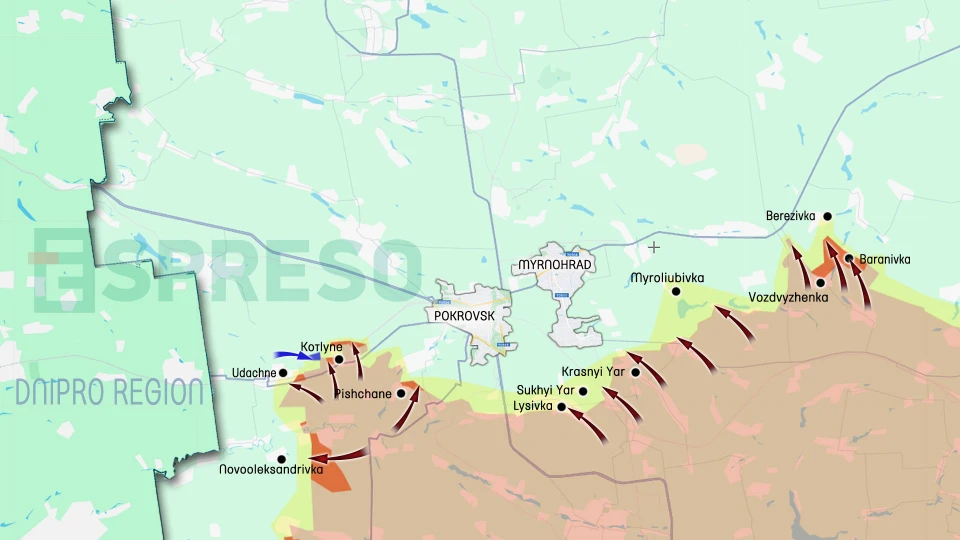
Ukraine Russia war live map, January 29 – February 5, Photo: Espreso
The entire front section from Kotlyne to the right flank near Vozdvyzhenka remains stable. Near the fully occupied Vozdvyzhenka, the Russians continue their attempts to break through to another key route: Pokrovsk–Kostiantynivka, which they have partially gained fire control over. They are now about 1 km away from the route, but they cannot advance directly, so they aim to expand the front line. To do so, Russian troops are trying to break through to the route via the village of Baranivka, where fierce battles have been ongoing for the third week. While the Defense Forces still control the northern outskirts of the village, the Russians continue advancing toward the route, having moved beyond Baranivka from the western side.
Chasiv Yar and Toretsk – the last battle?
In Toretsk, there were almost no changes on the map over the week, except for minor advances in Nelipivka, where the front line has been shifting between Nelipivka and Leonidivka for months. Despite the entire city being in the gray zone, the Ukrainian Armed Forces received significant reinforcements and halted the Russian advance. Urban battles continue in the northern part of Toretsk, around the Toretsk mine and the village of Krymske. It’s uncertain whether the Defense Forces will be able to hold the remnants of the city for long, but each day gained allows for better preparation for the defense of Kostiantynivka.
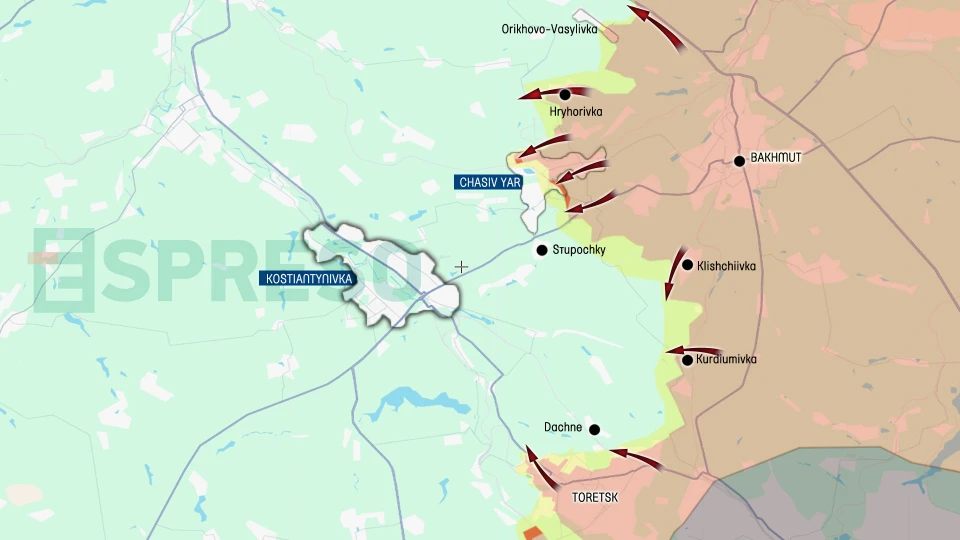
Ukraine Russia war live map, January 29 – February 5, Photo: Espreso
In Chasiv Yar, the situation is quite similar. Russian invaders are gradually pushing Ukrainian defenders out of the city. Over the past week, they have captured several northern districts, advanced in the tree line south of the city center, and intensified their assault along the road to Stupochky in an attempt to bypass Chasiv Yar and break through directly to Kostyantynivka.
The Russians have significantly escalated their activity in the Siversk sector, doubling the number of attacks. Despite this, the Defense Forces have held the front line almost unchanged in this sector for two years.
Lyman sector
Russian forces have expanded their control zone between Ivanivka and Kolodiazi and have begun attacking Bilohorivka. However, on the other side of the river, the Russians have made no progress in completing the occupation of Terny. The southern part of the village remains in the gray zone. The pace of the Russian advance in this sector has also slowed, while the Ukrainian Armed Forces have managed to stabilize the situation.
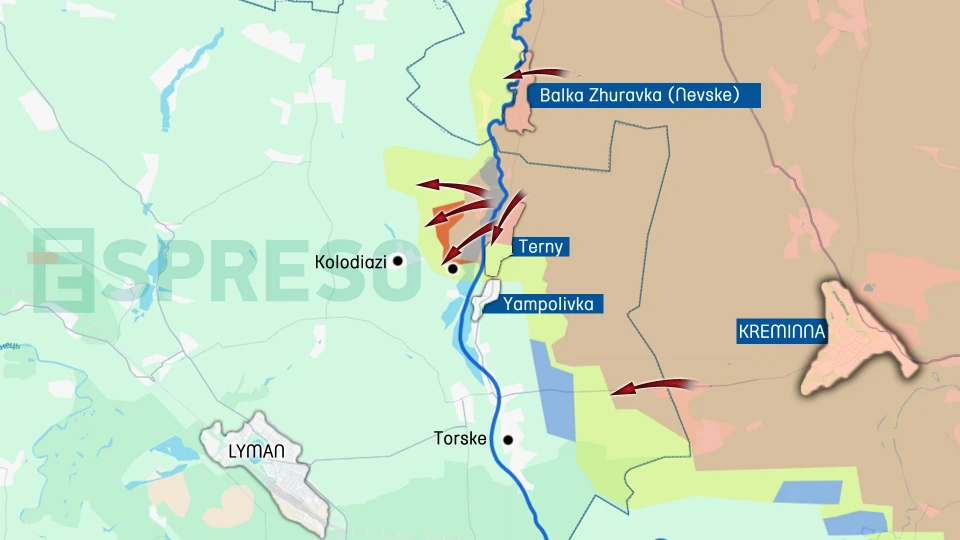
Ukraine Russia war live map, January 29 – February 5, Photo: Espreso
Kupyansk sector
Meanwhile, a crisis continues in the north of Kupyansk. Ukrainian forces failed to stop the Russians, who once again crossed the Oskil River and reoccupied Novomlynsk for the second time. This has allowed Russian forces to establish another bridgehead, aiming to link up their troops, expand their control zone, and stabilize it for the potential deployment of armored vehicles to the right bank. At the same time, the Ukrainian Armed Forces still hold part of Dvorichna and have prevented Russian forces from occupying the village of Zakhidne. However, Russian invaders have advanced southward toward Kupyansk, capturing over 3 km and reaching Kindrashivka, the largest village before Kupyansk, where the main battle will soon take place. The Russians are now just 5 km from Kupyansk, but their progress is expected to slow as they approach fortified Ukrainian positions.
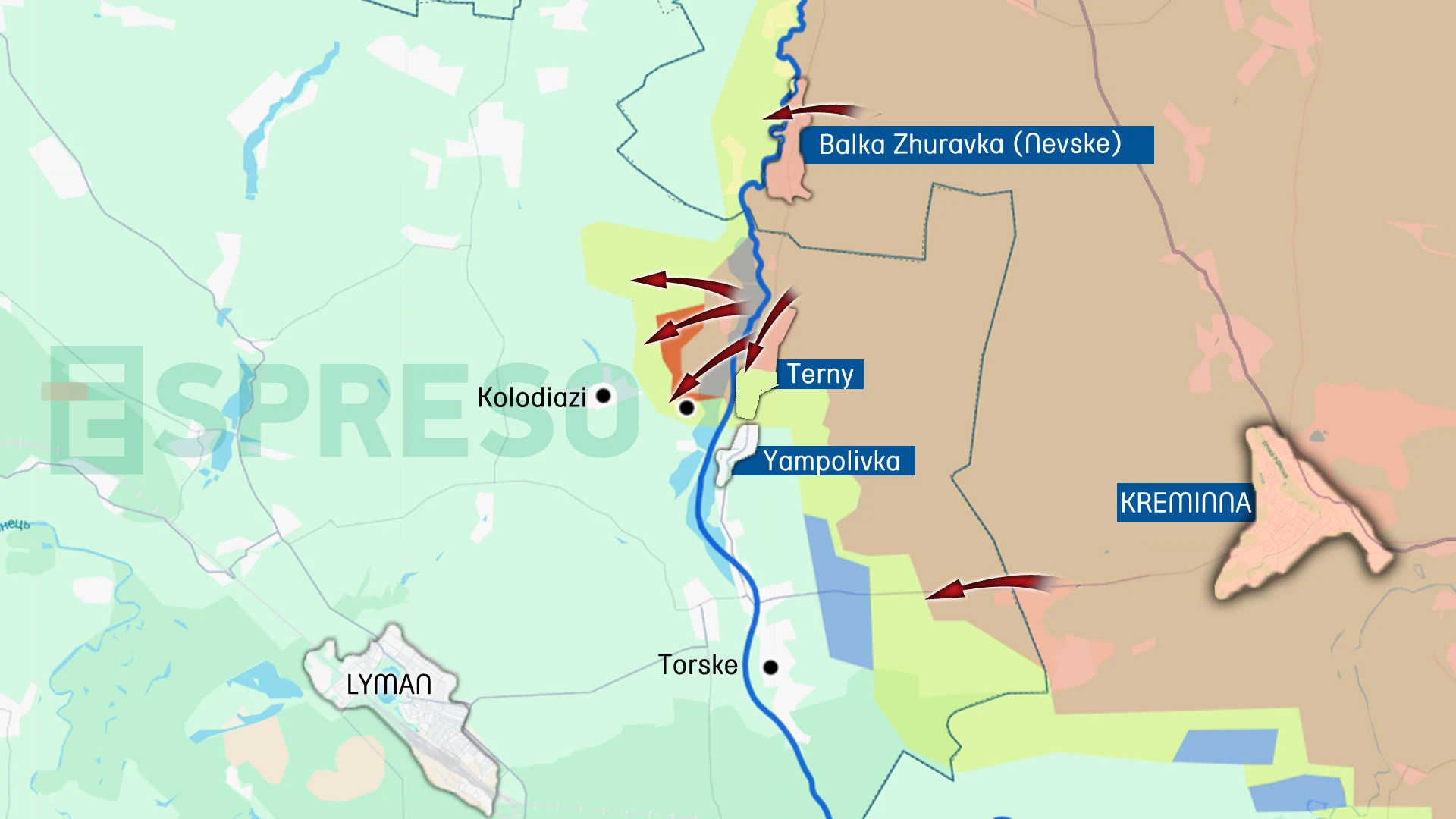
Ukraine Russia war live map, January 29 – February 5, Photo: Espreso
Currently, there is no direct threat to Kupyansk as long as Russian forces fail to establish another bridgehead south of the city. So far, their attempts to cross the Oskil River near Kruhlyakivka-Senkove have been unsuccessful, while Ukrainian forces continue to hold defensive positions in Kolisnykivka and Zahryzove, preventing Russian troops from expanding control along the riverbank.
Nevertheless, the Russians are showing serious intentions toward Kupyansk and potentially a larger portion of the Kharkiv region, which could become a priority in 2025.
Kursk region without North Koreans
After their fourth attempt at a large-scale counteroffensive, the Russians retreated and paused. The front line remains unchanged. However, reports suggest that North Koreans suffered heavy losses and left the battlefield. There is also a possibility that after certain contacts between the new Trump administration and North Korea, Kim Jong Un may reconsider his cooperation with Putin.
Russian gas station in flames
In January, Ukraine significantly intensified its strikes on Russia's oil and gas industry: oil refineries, oil depots, and other energy sector enterprises were set on fire. The most successful hits were on the Kstovo Refinery, the Ryazan Refining Company, and oil depots in the Voronezh, Tula, Kaluga, and Saratov regions. While Ukraine launched over 80 attacks on oil infrastructure last year, in January alone, more than 20 targets were struck.
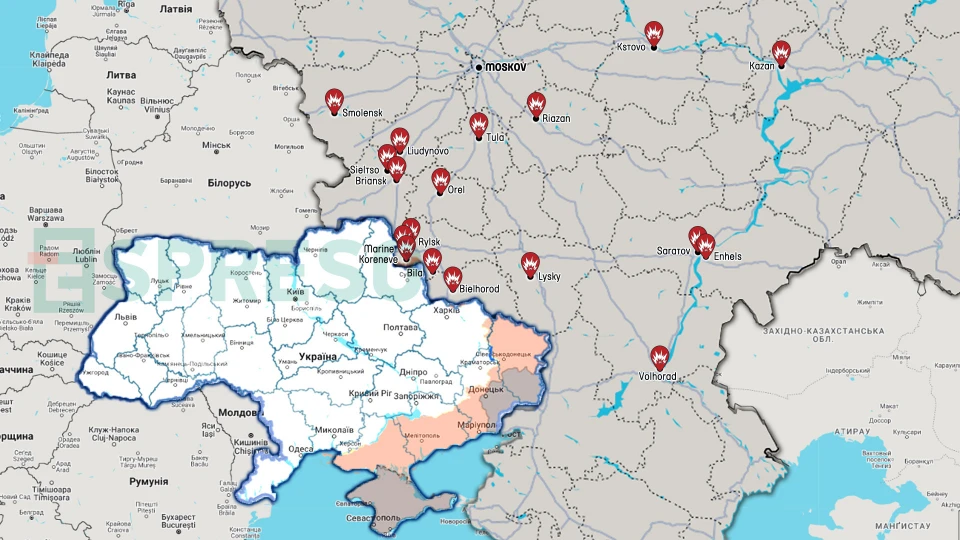
Ukraine Russia war live map, January 29 – February 5, Photo: Espreso
Additionally, several military-industrial complex facilities were targeted, including the Smolensk Aviation Plant and the Kremlin El factory in Bryansk. A few more successful strikes have not been disclosed yet.
Ukrainian Armed Forces Commander-in-Chief Oleksandr Syrskyi reported that due to the strikes on Russian military targets, the rate of ammunition consumption by the invading Russian forces has decreased by almost half.
The maps were created using data from the General Staff of the Ukrainian Armed Forces and other verified open sources. They are approximate and only represent general trends in the combat zone.
- News







